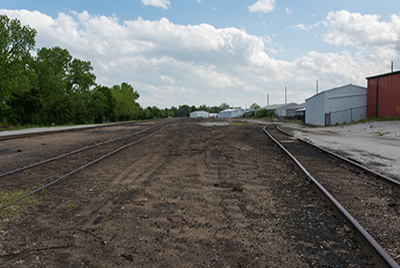



Standing at the intersection of Main Street and the railroad tracks in East Alton, one could be at a crossing similar to many across the United States. But here, in 1893, was site to the worst rail disaster in American Bottom history. With tracks owned and operated by an association popularly known as The Big Four, this line also saw use as passenger rail between St. Louis and points to the north. On January 21, 1893, a Southwestern Limited train, late and operating at high speed to make up for lost time, approached Wann (Alton) Junction, where the engineer saw that the rail switch was left open. Immediately pulling the brake, there was not sufficient distance to decelerate, and the five-car passenger train collided with a train carrying twenty-five oil tank cars. Initially most of the passengers were not injured. But a horrendous scene followed, unfolding in a series of tragic stages. Following the collision, a few of the oil cars spilled their contents, leading in a few moments to the ignition of over 7,000 gallons of oil sprayed across the site, burning dozens of spectators who had gathered after the accident. While numerous people were killed and dozens injured in this explosion, it was not yet the end of the destruction. Thinking this explosion marked the end of the cascading disaster, people from across the region had begun to arrive to help those hurt in both the initial accident and the explosion. At a moment of maximum vulnerability, another five tank cars, superheated from the nearby fires, exploded—killing 16 people and leveling houses, stockyards, and the depot surrounding the junction.
The rebuilt station in what is now known as East Alton was unceremoniously demolished in July 2006—another of the American Bottom’s historical erasures.